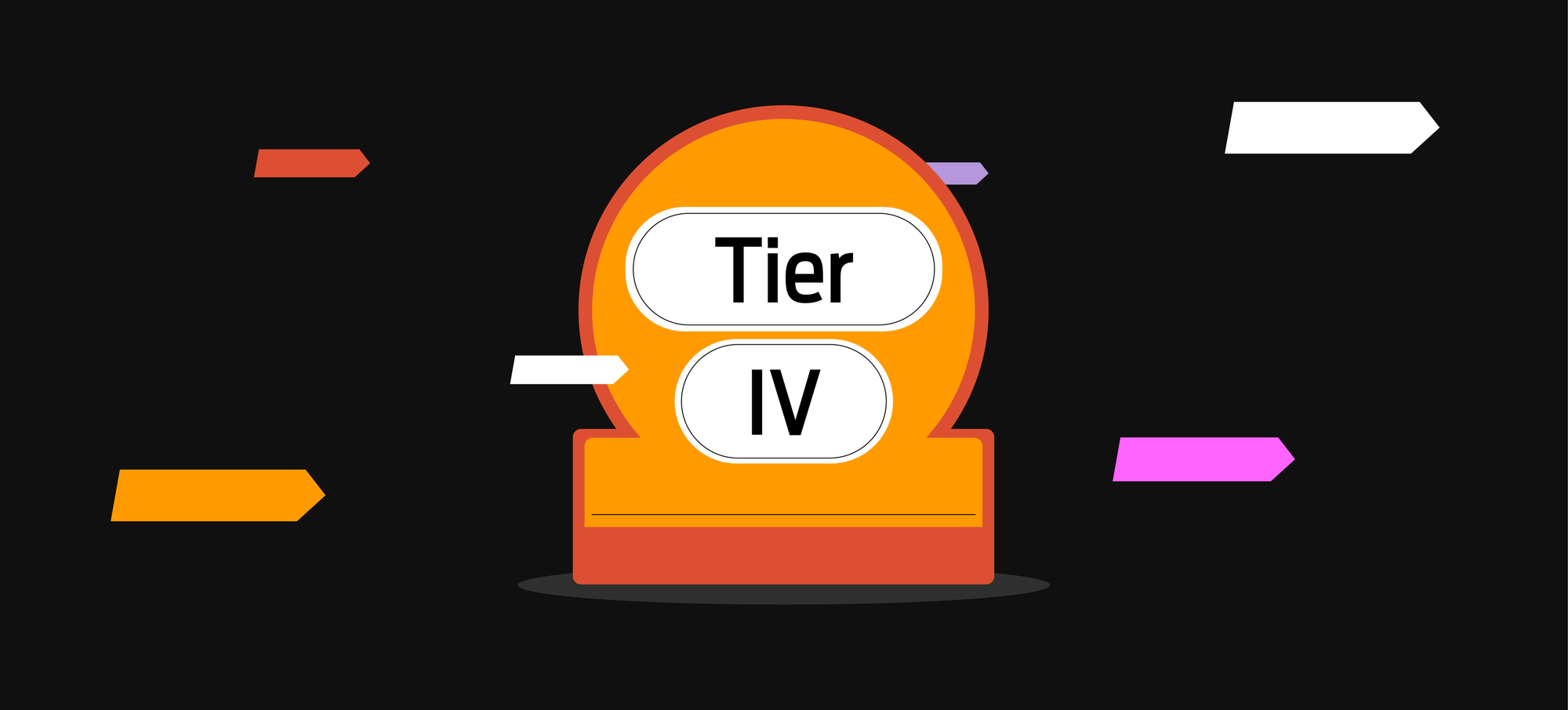Where you keep your data matters. So many businesses are migrating company data and critical parts of their IT infrastructure to the cloud, so it’s important to know the distinction between the servers that look after your information.
Why should I care?
The data centre is one of the first building blocks of the cloud, so knowing that the one in which your solution is hosted is certified by the highest standards of security is an important factor when deciding where to go.
Ensuring safety of hardware is a major concern for decision makers and executives. After all, the cost of downtime for any business is crippling, and sometimes fatal. 50% of all businesses don’t have the budget to recover from a breach of their data and having a certified DC is the first line of defence. With a Tier IV data centre, you won’t have to worry about any form of physical harm coming to your servers. For example, these data centres are protected by secure fencing, constant security, plus fire safety measures like fire rated doors and early fire detection.
What is the Tier Classification Standard?
Almost everyone relies on data centres and cloud computing whether you realise it or not – from email and Microsoft 365 to small businesses and corporations hosting mission-critical applications and workflows. The greater the need to be online and available, the more important it is to ensure security in data centres, prevent server failures, and maintain the availability of system resources.
Data centre tier classification systems provide information about the data centres’ fire safety, fault tolerance, maintenance, physical security and uptime. There are a number of nationally and internationally recognised standards used for ensuring these factors.
Among the most important standards is the Tier Classification Standard, issued by the Uptime Institute. This classifies data centres using a hierarchical system. The four tiers indicate where a data centre stands regarding uptime, security, and redundancy.
Why is the Uptime Institute's Tier Classification considered the gold standard?
The Uptime Institute’s Tier Certification decides on the criteria for each tier and lists several values that collectively make up the standards of data centre tiers.
Key factors include:
- Performance – standards are performance-based, meaning any solution that meets the requirements for availability, redundancy, and fault tolerance is acceptable.
- Technology neutral – tiers don’t need specific technologies in order to be classified, mostly because new advanced technologies consistently disrupt the digital transformation landscape.
- Vendor neutral – the brand of technology used in a data centre isn’t considered as a factor in determining the tier, meaning centres are judged only on their capabilities.
What are the tiers?
The tiers look at external factors like connectivity and the hierarchy of data centres in international networks, as well as internal factors like security measures and data centre downtime. The system is progressive, meaning that each higher tier also includes the requirements of the tiers below it.
Here is a detailed look at the requirements for each data centre tier.
Tier I data centres:
- No redundancy
- Single path for power and cooling
- No fault tolerance, not concurrently maintainable
- Limited cooling capacity – 220-230 watts per square metre
- Expected 99.67% uptime (maximum 28.8 hours of downtime per year)
- Protects against disruptions from human error
Tier II data centres:
- Partial redundancy for cooling and power
- One path for power
- Low fault tolerance, not concurrently maintainable
- Simple cooling capacity – 430-540 watts per square metre
- Expected 99.75% uptime (maximum 22 hours of downtime per year)
- Suitable for simple IT processes that require good performance, but aren’t mission critical. Not used very often.
Tier III data centres:
- Reliable redundancy for different components – two servers, multiple paths for cooling and power
- Good fault tolerance, concurrently maintainable
- Good cooling capacity – 1,070-1,620 watts per square metre
- Expected 99.98% uptime (maximum 1.6 hours of downtime per year)
- Recommended minimum level for businesses with high standards for seamless IT processes, e-commerce, and mission-critical processes.
Tier IV data centres:
- Complete redundancy for all parts of the system, including power and cooling
- Very high fault tolerance, no single points of failure
- Very good cooling capacity – over 1,620 watts per square metre
- Expected 99.999% uptime (maximum .8 hours of downtime per year)
- Suitable everyone, including large companies with internationally connected computing networks, 24/7 system availability, and highly mission-critical IT processes
- Provides the greatest level of assurance for your business
Why you should look for an MSP supported by a Tier IV data centre
Having a Tier IV data centre behind you means you’re guaranteed great service – from high uptime to security and reliability.
Tier IV data centres feature 2N and 2N+1, fully redundant infrastructure – the main difference between Tiers III and IV. 2N redundancy means that there’s a completely mirrored system on standby, independent of the primary system. So should anything happen to a component in the main data centre, there’s an identical replica for every component ready to pick up the slack. This is by far the most robust form of security.
All components are supported by 2 generators, 2 UPS systems, and 2 cooling systems. Each path is independent of the other, so a single failure in one won’t cause a domino effect with other components, as is the case with lower tiers.
Tier IV data centres also have a power outage protection of 96 hours. This power mustn’t be connected to any external source and must be independent. This is what’s referred to as “fault tolerance”, which means that, in the event of a system failure, IT operations aren’t affected in any way.
Unlike Tier III, Tier IV data centres are prepared for unplanned maintenance – businesses which use Tier IV systems will often be unaware that an outage has taken place at all.
Is quality testing mandatory for data centres?
Standards, tiers, and certifications are not mandatory – data centres participate voluntarily in them. This makes it even more important for investors, consumers, and end users to look out for a transparent indication of which tier a data centre belongs to. It’s also in the interest of those running data centres to increase their credibility with standards and certifications.
Our data centres just got better!
After years of planning, in 2022 we opened our brand new data centre in Worcester. Not only does this mean big things for us, it also allows us to provide even better services for you and your business. It operates at the highest security levels, whilst also being sustainable.
Powered by 100% renewable energy, our data centre really has it all. With solar panels providing power to 10% of the data centre (524kWp), electric car charging points and top-notch power usage effectiveness. Sustainability never looked so good!
Why us?
We’re ISO 27001 certified, meaning we meet the highest industry standards for information security. So we’ll keep your data safe and secure in our data centres.
Best of all, our new data centre has been built to the highest level of data centre standards. That’s right – Tier IV.
Not only that, but our data centre also gives you 99.999% availability, the highest levels of fault tolerance, uptime and incredible physical security too – like perimeter protection, security fencing and fire rated doors, walls and ceilings.
If you have any questions, our team is here to help. You can give them a call on 0333 111 2000.
Download and share
If you want to read this blog post offline, save it for later or share with a colleague, click the button below to download a PDF version.

